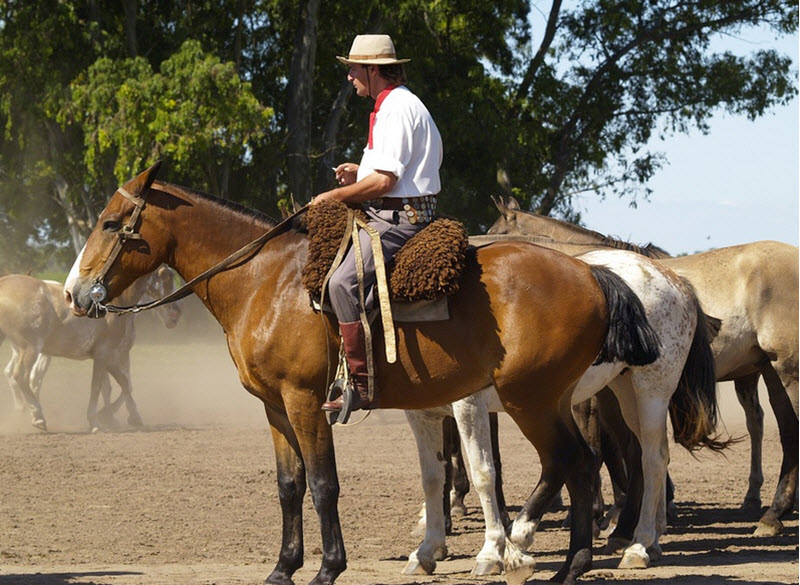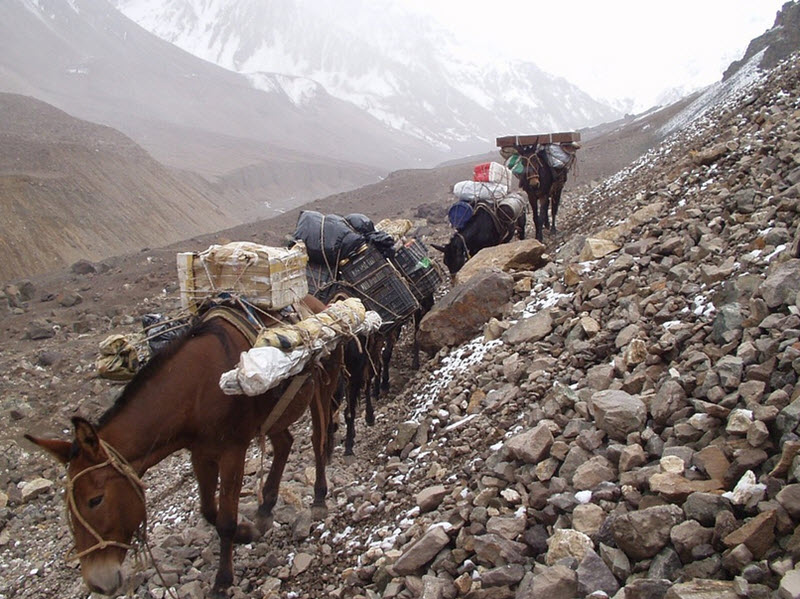Formally, Argentina has no official language, but the de facto official language is Spanish and almost the entire population speak and understand Spanish as a first or second language.
Examples of other major languages in Argentina are Guaraní, Quechua and Mapudungun, and Argentine Sign Language. Guaraní and Quechua are the main indigenous languages, with circa 200,000 and 65,000 speakers, respectively, in Argentina.
Today, 15 indigenous languages are still considered alive in Argentina. The number used to be greater in the past, but several indigenous languages have gone extinct here.

Dialects of Spanish
The most prevalent Spanish dialect in Argentina is Rioplatense, which is associated with the Río de la Plata basin, including the capital Buenos Aires. An estimated 19 million people speak this dialect in Argentina.
The second largest dialect is the Litoraleño, which is spoken by roughly 5 million people and associated with the provinces Santa Fe and Entre Ríos. Some sources consider this a version of Rioplatense rather than a distinct regional dialect.
A third major dialect in Argentina is the Cordoba dialect, also known as Central. A majority of its circa 3.75 million speakers live in the provinces Córdoba and San Luis.
In the north of Argentina we find regional dialects such as Norteño and Guaranitico, while Cuyano is widely spoken in the southern part of the north-west.
Guaraní
Guaraní belongs to the Tupi-Guarani language family.
While Guaraní is spoken in Argentina, it has many more speakers in nearby Paraguya where half of the rural population speak it as their main language, and roughly half of the total population speaks or at least understands Guaraní.
In Argentina, Guaraní is spoken chiefly in the north-east, and it was proclaimed as a second official language in the Corrientes province in 2004.
Guaraní is one of the official language of the South American trade bloc Mercosur.
Quechua
Quechua is a language family spoken by the Quechua peoples of the Andes. It is also known as Runasimi. Once upon a time, Quechua was the main language family of the Inca Empire. Today, it is spoken throughout the central Andes mountains, including parts of Argentina, Bolivia, Chile, Colombia, Ecuador, and Peru.
The version of Quechua spoken in (north-west) Argentina is called Southern Quechua or Quechua II C, and it is also spoken in parts of Bolivia, Chile, and southern Peru.
Santiagueño Quechua is a dialect of Southern Quechua associated with the Santiago del Estero province in Argentina. Due to migration, there are also quite some pockets of the dialect present in Buenos Aires.
Italian
Argentina received a large number of Italian immigrants in the 19th and early 20th century, and roughly 1.5 million people speak Italian in Argentina. Many of the immigrants spoke Italian regional dialects rather than standard Italian.
Italian dialects have had a notable influence on the Spanish dialect Rioplatense.

Lunardo
Lunardo is an argot that arose among lower class people in Buenos Aires in the late 19th and early 20th century. It contains words from several languages and dialects, including many from the Italian peninsula, and Lunardo also makes use of back-slang. Originally, Lunardo was associated with criminals who spoke Lunardo to keep others, e.g. prison wardens, in the dark.
Today, Lunardo is chiefly known because of the many tango lyrics that include elements of Lunardo. Lunardo words has also entered as slang expressions into the Spanish widely spoken in Buenos Aires.
One example of a tango lyric writer who made extensive use of Lunardo is the poet Celedonio Flores (1896-1947).
Is English spoken in Argentina?
Few Argentinians have English as their first language, but studying English as a foreign language is mandatory for school children and Argentina is one of few Latin American countries ranked ”High Aptitude” on the English Aptitude Index.
